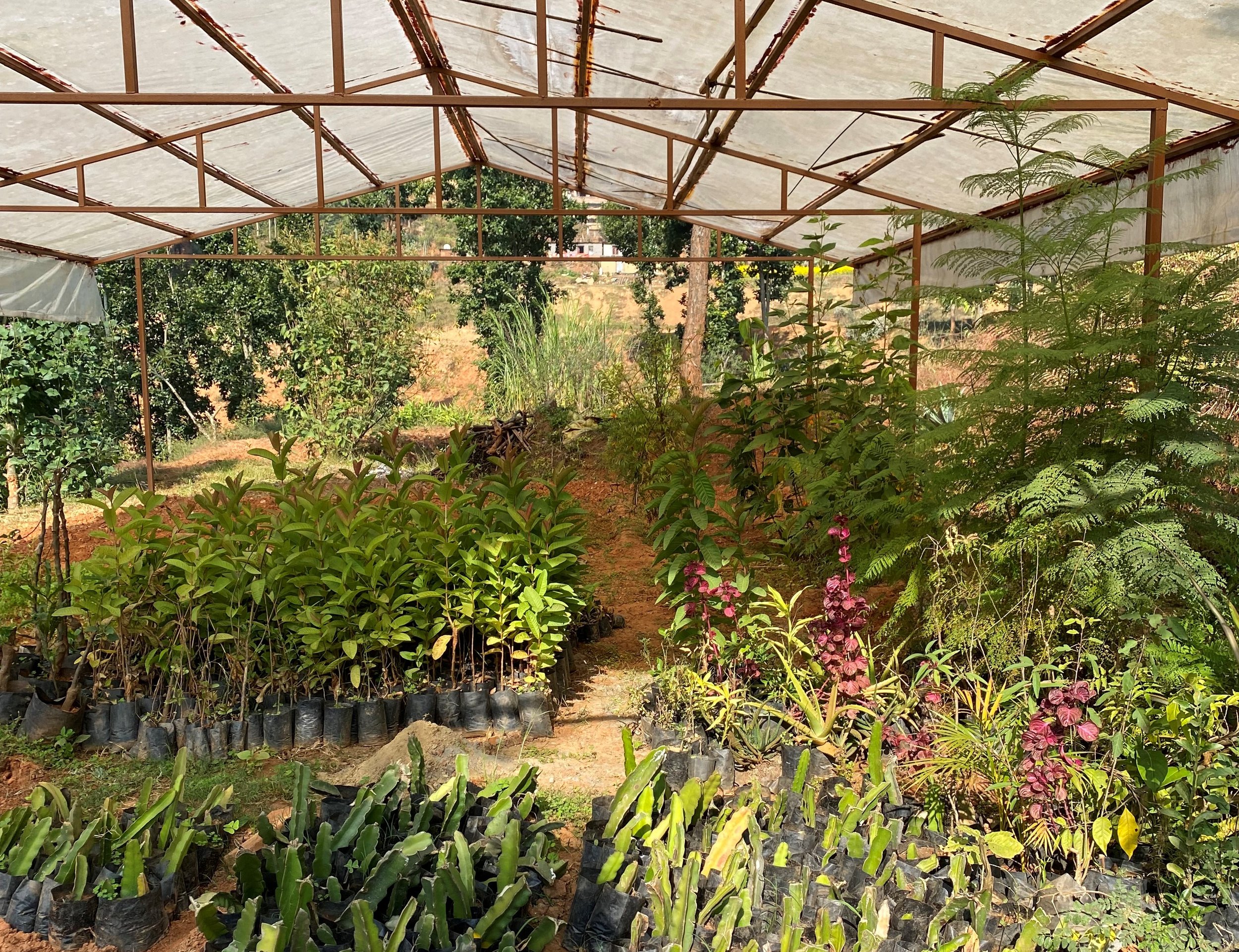I’m Basu Bastakoti, living in Mandandeupur Municipality-1, Halede, in Kavrepalanchowk. I’m 34 years old, and I’m proud to be one of the lead farmers of the Halede Satellite Nursery Group, which is part of the Mandandeupur Agro Foresty Resource Center. I have a family — my wife, Sumitra Paudel, who helps me with the day-to-day farming, a son and daughter who attend the local government school, and myself.
In my earlier years, I worked in India for five years and in Saudi Arabia for three years, seeking better employment opportunities. While abroad, I understood what it truly means to work hard and stay away from home and family, with barely any time to eat or sleep. After experiencing this, I decided to come back home and work hard on my own land, especially after the devastating earthquake of 2072 B.S. (2015) in Nepal.
Back home, I realised the agricultural market was highly competitive, and I wanted to offer something unique. That’s when I started cultivating tamarillo (tree tomato), a crop I hadn’t seen much of around here.
A few years ago, I started with just a few tree tomato plants in my home garden, each producing about 60-80 kg of fruit. I sold these weekly, and the prices were good. Today, I’ve expanded to 300 tree tomatoes in both my home garden and Pakha Bari (non-irrigable land). This season, I sold 1,500 kg of tree tomatoes and earned around 1.5 lakhs Nepali rupees. Inside the orchard, I’ve also been practicing mixed and multi-layer cropping. My garden is full of a variety of crops—spices like shallots, onions, garlic, coriander, fenugreek, and chilli; legumes like peas, beans, and long yard beans for vegetables; tubers like potatoes, radishes, and carrots; and cucurbitaceous crops such as cucumbers, bitter gourds, and pumpkins.
I’ve been able to sell the surplus vegetables and potatoes, and last year, I earned sixty thousand Nepali rupees just from potatoes. I also have a few fruit trees in my garden, including two mango trees, two macadamia trees, two soft walnut trees, and two avocado trees. I make sure every inch of my land is put to good use, turning it into one of the best kitchen and nutritional gardens in the area.
In my Pakha land, I’ve been practicing slash and burn (shifting cultivation), now I started to prepare that land for citrus farming, specifically limes and lemons. I’ve taken lime seedlings from the Mandandeupur Agro Forestry Resource Centre and started a citrus nursery at home, which I plan to plant this coming season.
Along with crops, I also raise two cows and four goats for milk and meat. I use the manure from these animals to fertilize my farm, and sometimes I buy chicken manure to add to the soil. I apply liquid fertilisers and biological pesticides to protect my crops from diseases and pests, using the knowledge I gained through training with the technicians from the Agro Foresty Resource Centre. The technicians visit my farm regularly as part of the farmer field school program, helping me with technical advice and support. The centre has also provided me with plastic tunnels, metal rods for permanent structures, and nursery equipment like secateurs, hand saws, grafting knives, rose cans, knapsack sprayers, and seasonal vegetable seeds to enhance my farming efforts.
Living in Mandandeupur-1, I’m near the border of Bhaktapur, Kathmandu, and Sindhupalchok, but the area is quite remote with limited access to regular transportation. I have to walk for about an hour to catch the bus. Despite this, the proximity to Kathmandu makes it convenient for selling my products. I often use my motorbike to transport my goods to places like Sakhu, Narayantar in Kathmandu, Thimi in Bhaktapur, and the Kalimati Vegetable Market. Thanks to my hard work, I earn about 2.5 lakhs Nepali rupees annually from my agricultural products.
However, farming here isn’t without its challenges. Wild animals like deer and wild boar often destroy my crops, especially vegetables. Managing these animals is tough, but I remain determined. I also produce fruits, nuts, and local fodder trees in my nursery to diversify my farming efforts. Looking at my field and activities, I am confident that I will leave no stone unturned in making my agricultural journey successful.























